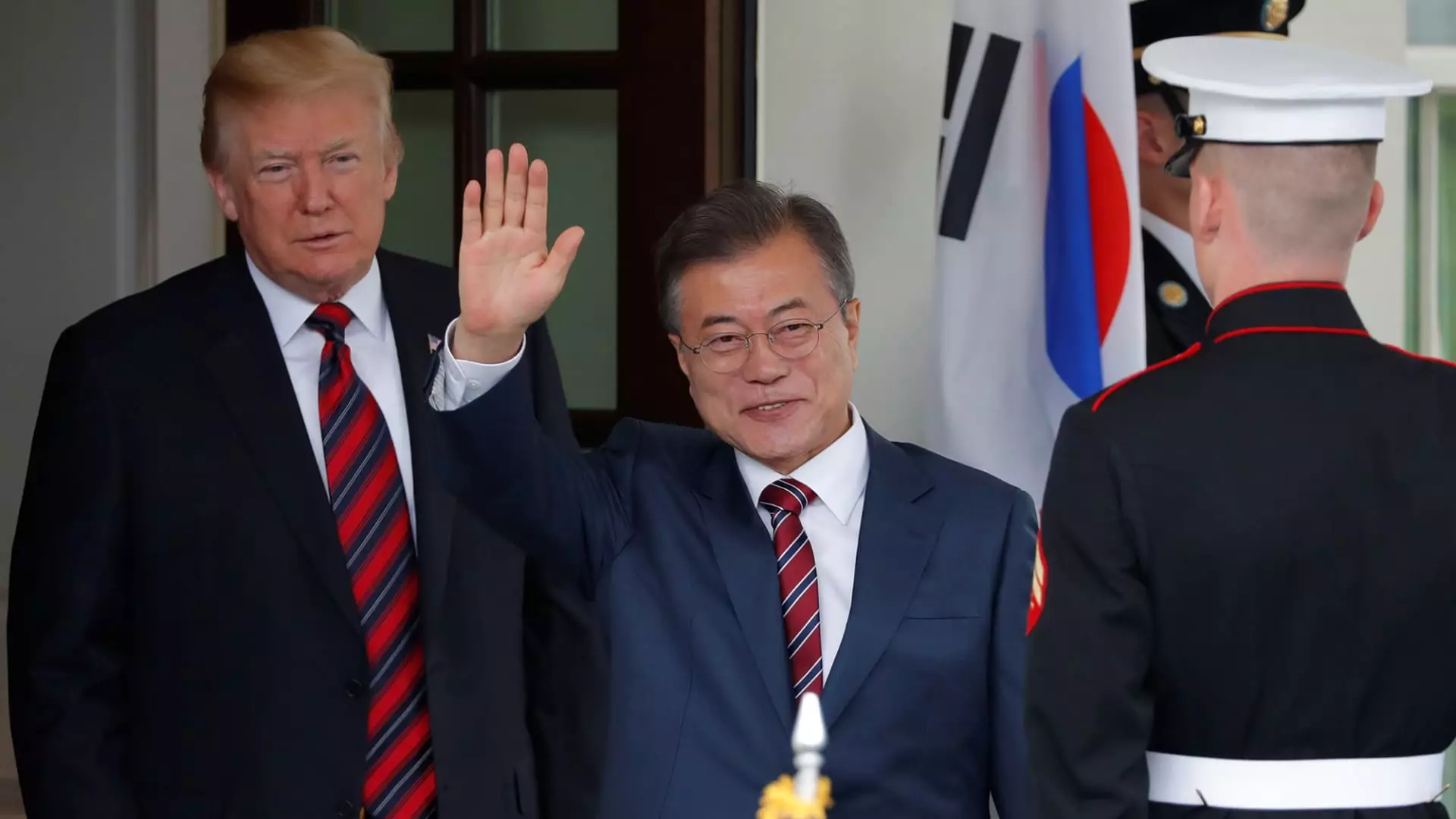As the U.S. government prepares to reassess its international trade strategies, the prospect of increased tariffs on automotive imports from countries like South Korea and Japan emerges as a critical issue. The automotive sector is a key player in the broader economy, and any shifts in trade policy could have profound ramifications not only for automakers but also for consumers and global trade relations. President Trump’s threats to impose heightened tariffs are particularly concerning for these East Asian nations, which constitute a significant portion of vehicle imports into the United States.
In recent years, South Korea and Japan have asserted themselves as major contributors to the U.S. automotive market, accounting for a combined 16.8% of sales in the last year alone. Notably, South Korea has surpassed Japan in vehicle exports to the U.S., moving up to 8.6% of sales, as data reveals a significant upward trend in its automotive exports. In contrast, the market share of Japanese vehicles has gradually declined, with Japan reporting 1.31 million vehicles sold last year. Given the lack of duty on South Korean vehicles and a minimal 2.5% tariff on Japanese imports, the advantages enjoyed by automakers like Hyundai and Toyota could be jeopardized by new tariff regulations.
The ramifications of increased tariffs would likely hit the automakers and consumers most directly. Companies like Hyundai and General Motors, which significantly rely on tariff-free exports from South Korea, could face substantial financial impacts if tariffs are enacted. Jeff Schuster of GlobalData has pointed out that while major players like GM might navigate some of this risk, overall it remains confined to a select group of automakers. In a fiercely competitive market, raising vehicle prices due to tariffs could diminish consumer demand, leading to a potential downturn in sales for affected manufacturers.
Moreover, while South Korean imports currently enjoy a zero percent tariff, the automotive trade deal negotiated in 2018 has not yielded substantial benefits for vehicle exports to the U.S., raising questions about its effectiveness. According to the International Trade Commission, there has been a decline in U.S. vehicle exports to South Korea, illustrating the complexities and unintended consequences of trade agreements.
One of the most pressing concerns surrounding the imposition of tariffs is the possibility of elevated vehicle prices. Tariffs function as a tax on imports, often leading companies to pass these costs onto consumers. The result could be a significant increase in car prices, impacting budget-conscious buyers and potentially reducing overall demand in the automotive market. With manufacturers already struggling to keep pace with new consumer preferences and technological advancements, additional financial burdens could further complicate their operational viability.
Amid these potential changes, industry leaders like Terence Lau advocate that the automotive sector is adaptable and can adjust to new tariffs over time. However, he emphasizes that a sudden shift could create challenges for automakers who require stability to effectively manage production and maintain profitability. Ford Motor CEO Jim Farley, echoing similar concerns, suggests that any tariff policy should be comprehensive and include all countries to avoid offering advantages to specific foreign competitors. He urges a fair approach that doesn’t unfairly favor certain companies over others in an increasingly globalized market.
The future of tariffs in the U.S. remains uncertain, with the government’s stance evolving as global trade dynamics fluctuate. President Trump recently outlined his intention to introduce “reciprocal tariffs” on foreign nations, which indicates an aggressive tactic to level the playing field. However, the specifics of such policies remain ambiguous, leaving automakers and consumers apprehensive about the potential fallout.
With ongoing geopolitical tensions and shifting economic policies, the auto industry must be prepared for various outcomes. The interplay between domestic production and international imports will continue to shape the market. As automakers navigate this complex landscape, the dialogue surrounding tariffs will be crucial in determining not just the profitability of companies, but also the affordability of vehicles for consumers across the United States.
The implications of potential tariffs on automotive imports from East Asia are multifaceted and profound. As combinations of market share, consumer demand, and global trade relations evolve, how the automotive industry responds to these external pressures will play a pivotal role in its future sustainability. The coming months will likely reveal the sophistication with which this crucial sector adapts to new economic realities, and its ability to safeguard consumer interests amid changing trade policies.

